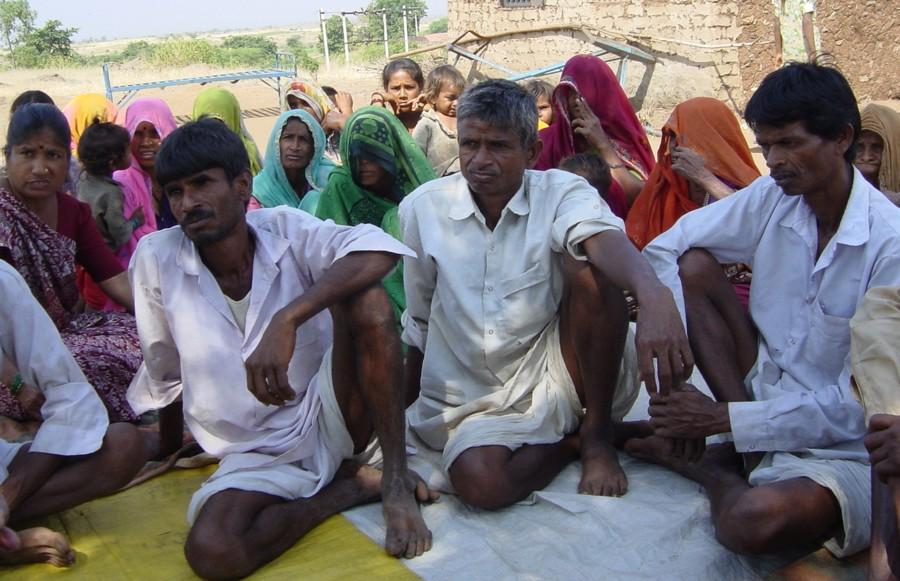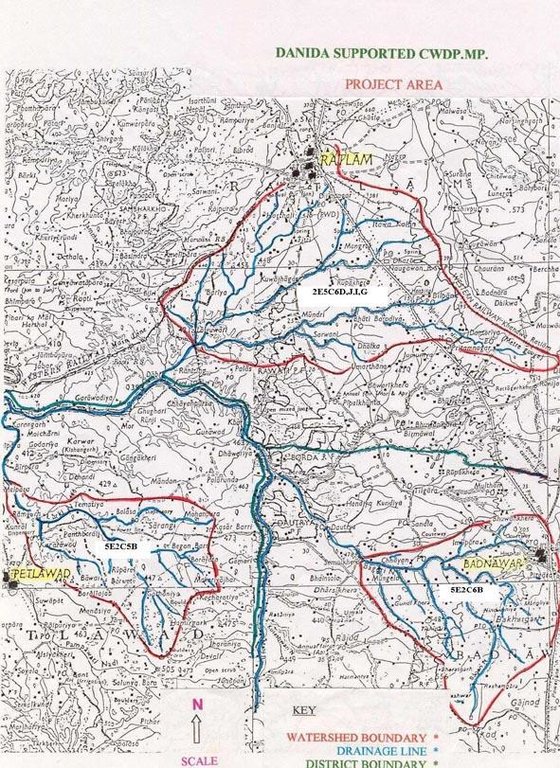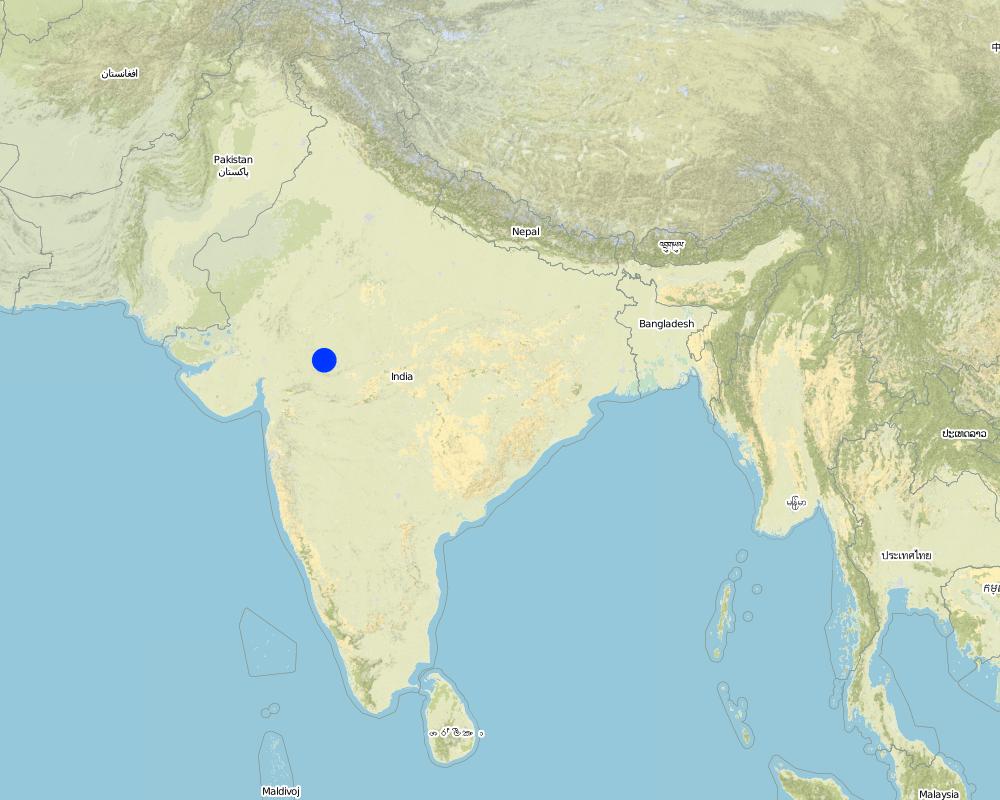Comprehensive watershed development [Энэтхэг]
- Шинийг нээх:
- Шинэчлэх:
- Эмхэтгэгч: David Gandhi
- Хянан тохиолдуулагч: –
- Хянагч: Fabian Ottiger
approaches_2374 - Энэтхэг
Бүлгүүдийг үзэх
Бүгдийг дэлгэх Бүгдийг хаах1. Ерөнхий мэдээлэл
1.2 Арга барилыг баримтжуулах болон үнэлгээ хийхэд оролцсон хүн эсвэл байгууллагын холбоо барих хаяг
ГТМ мэргэжилтэн:
ГТМ мэргэжилтэн:
ГТМ мэргэжилтэн:
ГТМ мэргэжилтэн:
Desai Nilesh
SAMPARK, Raipuria, Tehsil- Petlawad, Distt. Jhabua (MP)
Энэтхэг
ГТМ мэргэжилтэн:
ГТМ мэргэжилтэн:
ГТМ мэргэжилтэн:
Bhattacharya Tapan
Lok Biradari Trust, Indore (MP)
Энэтхэг
Арга барилыг баримтжуулах/үнэлэх ажилд дэмжлэг үзүүлсэн байгууллага(ууд)-ын нэр (шаардлагатай бол)
Danida assisted Karnataka Watershed Development Project, Bijapur (Danida assisted Karnataka Watershed Development Project, Bijapur) - ЭнэтхэгАрга барилыг баримтжуулах/үнэлэх ажилд дэмжлэг үзүүлсэн байгууллага(ууд)-ын нэр (шаардлагатай бол)
Lok Biradari Trust - Энэтхэг1.3 WOCAT-аар баримтжуулсан өгөгдлийг ашиглахтай холбоотой нөхцөл
Эмхэтгэгч болон гол мэдээлэгч хүн(хүмүүс) WOCAT аргачлалаар баримтжуулсан мэдээллийг ашиглахтай холбоотой нөхцлийг хүлээн зөвшөөрсөн:
Тийм
1.4 ГТМ-ийн технологийн асуулгын(д) суурь мэдээлэл(д)
2. ГТМ Арга барилын тодорхойлолт
2.1 Арга барилын товч тодорхойлолт
Participatory approach that includes a package of measures leading to empowerment of communities to implement and sustain watershed development.
2.2 Арга барилын дэлгэрэнгүй тодорхойлолт
Арга барилын дэлгэрэнгүй тодорхойлолт:
Aims / objectives: The approach adopted under the Comprehensive Watershed Development Project (CWDP) is intended to ensure sustainability of development interventions. This can only be achieved through creating a sense of 'ownership' amongst users, which means involving the community in planning, implementation and management of the interventions. A further, specific objective is to benefit vulnerable sections of the community.
Methods: Various methods are employed to achieve these goals. There is, first of all, awareness generation within the community through exposure visits outside the area, street theatre and video shows. After this comes the formation and capacity building of village level institutions, in particular the Village Watershed Development Committees (VWDCs). Users' groups are also formed. Micro-planning (under a 'village development plan') using participatory rural appraisal (PRA) follows. There are arrangements to ensure participatory execution of the plan, specifying cost and benefit sharing (on average 75%-90% of the work is paid for in cash under this approach). Another important element is to ensure user rights to resources. This entails negotiation with government for rights to produce from common land. Eventually, after initial implementation, management becomes the task of the users' groups: this includes maintenance, distribution of benefits and conflict resolution. The whole process involves NGOs along with government staff in order to achieve better communication all round. The participants have different roles. Government staff (at various levels) provides technical and financial support, as well as assistance towards gaining user rights over resources. NGOs are particularly important in awareness generation and mobilisation, capacity building of village level institutions, and in the process of negotiation with the Government.
Role of stakeholders: The village committee is central in planning and implementation of the village development plan, and in overseeing users's groups. Users's groups are involved in planning, implementation and then resource management. The village assembly helps to identify beneficiaries and users, and to give overall support to the VWDC. An external international donor, DANIDA of Denmark, supports the Comprehensive Watershed Development Project.
2.3 Арга барилын зурагууд
2.5 Арга барил нэвтрүүлсэн улс орон / бүс нутаг / байршил
Улс:
Энэтхэг
Улс/аймаг/сум:
Madhya Pradesh
Map
×2.6 Арга барилыг эхлэх, дуусах огноо
Эхлэх жилийг тэмдэглэ:
1997
Хугацаа дуусах жил (Хэрэв арга барил удаанаар ашиглаагүй бол):
2007
2.7 Арга барилын төрөл
- төсөл / хөтөлбөр дээр үндэслэсэн
2.8 Арга барилын үндсэн зорилго, зорилтууд
The Approach focused mainly on SLM with other activities (1- Capacity building of communities, 2- Production system)
- create a sense of ownership amongst users. - ensure sustainability of technical and social interventions. - benefit more vulnerable sections of the community, including the poor and women. - involve the community in planning, implementation and management interventions
The SLM Approach addressed the following problems: previous lack of consultation/involvement with the community in planning, implementation and management of watershed development interventions
2.9 Арга барилын хүрээнд хэрэгжсэн Технологи/Технологиудад дэмжсэн эсвэл саад учруулсан нөхцлүүд
нийгэм / соёл / шашны хэм хэмжээ, үнэт зүйлс
- Хазаарлалт
Lack of awareness and mobilisationon improvement of production systems.
Treatment through the SLM Approach: Intensive programme for awareness generation and mobilisation of community
санхүүгийн нөөц, үйлчилгээний хүртээмж / боломж
- Хазаарлалт
Treatment through the SLM Approach:
Бүтэц зохион байгуулалт
- Хазаарлалт
Lack of effective institutions at village level to take responsibility for the development process.
Treatment through the SLM Approach: Formation & capacity building of VLI (VWDC,UG) with assistance of NGOs.
Хууль, эрхзүйн хүрээ (газар эзэмшил, газар, ус ашиглах эрх)
- Хазаарлалт
Uncertainity fover rights to access to resources
Treatment through the SLM Approach: Negotiations facilitated by NGOs
The existing land ownership, land use rights / water rights moderately hindered the approach implementation While treatment of privately owned land did not face a problem, encroachment on Govt. land was an obstacle which discouraged land users from implementing SWC on these lands. Furthermore it was not possible to obtain users rights on lands under the Forest Department, which resulted in their exclusion from SWC in most cases. The NGOs involved however acted as intermediaries in negotiations.
ГТМ-ийн талаарх мэдлэг, техникийн дэмжлэг авах боломж
- Хазаарлалт
High cost water harvesting measures.
Treatment through the SLM Approach: Demonstration of low cost alternatives such as the doh (sunken structure in dry riverbed to increase infiltration of runoff, which replenishes wells for irrigation: see 'related technology').
3. Оролцогч талуудын оролцоо ба үүргүүд
3.1 Арга барилд оролцогч талууд болон тэдгээрийн үүргүүд
- Орон нутгийн газар ашиглагч / орон нутгийн иргэд
Specific ethnic groups: While the main group were Bhil tribal, other groups included Gujars, Patidars etc.
Due to social factors, traditionally decision making largely done by men. However, the project has worked towards involving women in all aspects of the project. Participation of women in decision making bodies such as village committee is restricted . Participation of women is good in implementation, self-help groups etc. The project is active in neediest & most degraded villages which are fairly homogenous in nature. Furtherore efforts are made to identify and benefit poorest households.
- ТББ
- Орон нутгийн захиргаа
Village Watershed Development Committee, Users Group.
- Засгийн газар (шийдвэр гаргагч, төлөвлөгч)
Govt. of India/ Govt. of Madhya Pradesh, Department of Agriculture.
- Олон улсын байгууллага
Danida
Хэрэв хэд хэдэн оролцогч талууд оролцсон бол голлох төлөөлөгчийг зааж өгнө үү:
The broad approach was developed by national and international specialists at the time of project appraisal. The detailed pedagogy was developed by the project in consultation with NGO partners and consultants.
3.2 Арга барилын янз бүрийн үе шатанд орон нутгийн газар ашиглагчид / бүлэглэлүүдийг татан оролцуулах
| Орон нутгийн газар ашиглагч / орон нутгийн иргэдийн оролцоо | Хэн оролцсоныг тодорхойлж, үйл ажиллагааг тайлбарлана уу | |
|---|---|---|
| санаачлага/идэвхжүүлэлт | интерактив | Mainly:public meetings; partly: awareness generation; Community meeting for discussion. Street plays, exposure visits for awareness generation. |
| Төлөвлөгөө | интерактив | Mainly: rapid/participatory rural appraisal; partly: group meeting; Preparation of village plan. Discussion on village plan. Negotiation, Decision making. |
| Хэрэгжилт | интерактив | responsibility for minor steps; Landusers provide labour, partly subsidized by project. VWDC members involved in supervision & payments. |
| Мониторинг/ үнэлгээ | интерактив | measurements/observations; Water levels, migration rates monitored by community with project staff. Gram sabha (Village assembly) meets every 3-6 months to discuss project activity. VWDC meets monthly to take stock. |
| Research | идэвхигүй | on-farm; studies carried out by project staff. |
3.3 Диаграм (хэрэв боломжтой бол)
Тодорхойлолт:
CWDP-MP: Comprehensive Watershed Development Project in Madhya Pradesh PIP: Project Implementation Plan VWDC: Village Watershed Development Committee
3.4 ГТМ-ийн технологи/технологиуд сонгох шийдвэр
Хэрэгжүүлэх Технологи/Технологиудын сонголтыг хийж шийдвэр гаргасан хүнийг тодорхойлно уу:
- голдуу ГТМ-ийн мэргэжилтнүүд, газар ашиглагчидтай зөвлөлдсөний үндсэн дээр
Тайлбар:
exposure visits' to outside demonstration sites are used as a tool for sensitisation, motivation and awareness raising.
Decisions on the method of implementing the SLM Technology were made by mainly by land users supported by SLM specialists. Discussion with VWDC,UG.
4. Техникийн дэмжлэг, чадавхи бүрдүүлэх, мэдлэгийн менежмент
4.1 Чадавхи бэхжүүлэх/сургалт
Газар эзэмшигчид / бусад оролцогч талуудад сургалт явуулсан уу?
Тийм
Хэн сургалтанд хамрагдсан бэ:
- Газар ашиглагчид
- SWC specialists, extensionists/trainers
Сургалтын хэлбэр:
- Ажил дээр
- курс дамжаа
Сургалтын хэлбэр:
- exposure visits
Хамрагдсан сэвдүүд:
1- Training for VWDC, UG, SHG's to conduct meetings, accounts and book-keeping. 2- Technical trainings. These are provided by government and NGO staff. Training concentrates on participatory approaches and low cost technologies. Capacity building for community groups and land users enables them to participate better in projects and to take ownership of assets.
4.2 Зөвлөх үйлчилгээ
Газар ашиглагчдад зөвлөх үйлчилгээ авах боломжтой байдаг уу?
Тийм
Зөвлөх үйлчилгээ үзүүлсэн эсэхийг тогтоо:
- Газар ашиглагчийн талбай дээр
Тодорхойлолт / тайлбар:
Name of method used for advisory service: Multi Disciplinary Teams; Key elements: Field staff drawn from different Govt. line deptt. and NGO's., Village level workers selected locally, paid by the Project through NGOs., Formation, capacity building of village level institutions and farmers.; 1) Advisory service carried out through: non-governmental agency, projects own extension structure and agents; Extension staff: Govt.+ NGO employees 2) Target groups for extension: land users; Activities: Capacity building of village institutions, demonstration of SWC measures, production
Advisory service is quite adequate to ensure the continuation of land conservation activities; The state policies now emphasise the participatory approach. However, aspects like GO-NGO cooperation need to be instutionalised.
4.3 Институцийг бэхжүүлэх (байгууллагын хөгжил)
Арга барилаар дамжуулан институц байгуулагдаж эсвэл бэхжсэн үү?
- Тийм, маш их
Байгууллагууд бэхжиж, үүсэн бий болсон түвшин(үүд)-г тодорхойлно уу:
- Орон нутгийн
Дэмжлэгийн төрлийг ялга:
- Санхүүгийн
- чадавхи бэхжүүлэх / сургалт
4.4 Мониторинг ба үнэлгээ
Мониторинг болон үнэлгээ нь арга барилын хэсэг үү?
Тийм
Тайлбар:
bio-physical aspects were regular monitored through observations; indicators: general parameters
technical aspects were regular monitored through measurements; indicators: water levels in some wells
socio-cultural aspects were ad hoc monitored through measurements; indicators: migration
economic / production aspects were regular monitored through measurements; indicators: yield
area treated aspects were ad hoc monitored through observations; indicators: hectares treated
no. of land users involved aspects were regular monitored through measurements; indicators: attendance at meetings
There were several changes in the Approach as a result of monitoring and evaluation: Several technological changes have taken place as a result of a review: for example feedback on yield data led to crop variety recommendations. Levels of water in wells confirmed impact of the 'sunken structures' (dohs).
5. Санхүүгийн болон гадаад материаллаг дэмжлэг
5.1 ГТМ-ийн Арга барилын бүрэлдэхүүн хэсгийн жилийн төсөв
Хэрэв жилийн төсөв тодорхойгүй бол хягаарыг тодруулна уу:
- 100,000-1,000,000
Тайлбар (жнь: санхүүжилтийн гол эх үүсвэр / гол хандивлагчид):
Approach costs were met by the following donors: government (national): 5.0%; international (-): 85.0%; local community / land user(s) (labour): 10.0%
5.2 Газар ашиглагчдад санхүүгийн / материаллаг дэмжлэг үзүүлсэн
Технологи / технологийг хэрэгжүүлэхэд газар ашиглагчид санхүүгийн / материаллаг дэмжлэг авсан уу?
Тийм
5.3 Тодорхой зардлыг даахад чиглэсэн дэмжлэгт (хөдөлмөрийн хүчийг оролцуулаад)
- Тоног төхөөрөмж
| Ямар хөрөнгө оруулалт татаасаар олгогдсоныг заана уу | Ямар талбайн хэмжээнд | Тэтгэмж, урамшууллыг тодорхойлно уу |
|---|---|---|
| машин төхөөрөмж | Бүрэн санхүүждэг | |
- Хөдөө аж ахуй
| Ямар хөрөнгө оруулалт татаасаар олгогдсоныг заана уу | Ямар талбайн хэмжээнд | Тэтгэмж, урамшууллыг тодорхойлно уу |
|---|---|---|
| Үр, үрсэлгээ | хэсэгчлэн санхүүждэг | |
| Seedlings | хэсэгчлэн санхүүждэг | |
Хэрэв газар ашиглагчийн хөдөлмөрийн хүч чухал байсан бол энэ нь аль хэлбэр байсан:
- бэлэн мөнгөөр төлдөг
Тайлбар:
As is common in Indian watershed development initiatives, there is a substantial subsidy towards labour involved. under this approach 75-90% of labour input is paid for in terms of cash: the remainder is voluntary contribution
5.4 Кредит
Арга барилын хүрээнд ГТМ-ийн үйл ажиллагаанд зориулж зээлд хамрагдсан уу?
Үгүй
6. Нөлөөллийн дүн шинжилгээ ба дүгнэлт
6.1 Арга барилын нөлөөллүүд
Арга барил нь ГТМ-ийн технологийг хэрэгжүүлж, хадгалахад газар ашиглагчдад тусласан уу?
- Үгүй
- Тийм, бага зэрэг
- Тийм, зарим
- Тийм, их
The participatory approach has been fairly successful in demonstrating SWC technologies such as Silvi Pasture, Sunken Structures which have been adopted/maintained by the land users.
Арга барил нь ГТМ-ийн технологийг хэрэгжүүлэхэд саад учруулсан газрын эзэмшил / ашиглах эрхийг сайжруулахад чиглэсэн үү?
- Үгүй
- Тийм, бага зэрэг
- Тийм, зарим
- Тийм, их
By using the approach, the project was able to win the confidence of most land users.
Did other land users / projects adopt the Approach?
- Үгүй
- Тийм, бага зэрэг
- Тийм, зарим
- Тийм, их
The pilot project which has tested the approach over past 3-4 years is implemented by the Department of Agriculture. The State Department of Agriculture has now expanded the approach to its other projects eg. NWDPRA.
6.3 Арга барилын үйл ажиллагааны тогтвортой байдал
Газар ашиглагчид арга барилаар дамжуулан хэрэгжүүлсэн арга хэмжээг тогтвортой хадгалж чадах уу (гадны дэмжлэггүйгээр)?
- Тодорхойгүй
Хэрэв үгүй эсвэл тодорхойгүй бол дэлгэрэнгүй тайлбар өгнө үү:
1- NGO's will contrinue to visit villages where project has completed bio-physical activities for a period of 2-3 years with a view to provide support and further training to VLI's & communities. Hence it is pre-mature to comment at this stage.
6.4 Арга барилын тогтвортой/давуу тал/боломжууд
| Газар ашиглагчдын тодорхойлсон давуу тал/боломжууд |
|---|
| Awareness about SWC increased through street plays, exposure visits. Use of drama preferred to verbal communication. (How to sustain/ enhance this strength: Continue, and include visits to successful income generating projects.) |
| Participatory planning has led to better understanding of resources and possibilities (How to sustain/ enhance this strength: The entire village plan should be implemented in defined stages to allow impact to be noted/felt.) |
| Cost-sharing increases feeling of ownership. (How to sustain/ enhance this strength: Community contribution should be deposited in the village fund to enable further activities after project moves out.) |
| Due to village institutions, there is greater decentralisation of ressponsibility and more people are actively involved. |
| As a result of village fund, interest component remains within the village. |
| Increased transparency as a result of GO-NGO cooperation. (How to sustain/ enhance this strength: Less rigidity in roles of GO/NGO staff.) |
| Эмхэтгэгч, бусад мэдээлэл өгсөн хүмүүсийн өнцгөөс тодорхойлсон давуу тал/боломжууд |
|---|
| Marginalised groups have been identified and given a 'say' (How to sustain/ enhance this strength: NGOs should continue to advise/guide/monitor activities) |
| Systematic approach to strengthen community participation (How to sustain/ enhance this strength: Detailed 'process documentation' to be continued.) |
| Leadership developed at village level. (How to sustain/ enhance this strength: NGO's continue to advise/guide/monitor activities in the village.) |
| Land users develop a strong sense of ownership of the assets created. (in terms of cost-sharing, a local contribution of up to 25% is high in Indian contexts) (How to sustain/ enhance this strength: There needs to be continued support for 2-3 years after phasing out of bio-physical watershed development activities; also important to build up village funds through a 'community contribution' charge deducted from wages.) |
| Government system can be strengthened by co-operation with NGOs in watershed management projects (How to sustain/ enhance this strength: Continue dialogue between partners at various levels..) |
6.5 Арга барилын дутагдалтай/сул тал/аюул болон тэдгээрийн хэрхэн даван туулах арга замууд
| Газар ашиглагч нарын тодорхойлсон сул тал/ дутагдал/ эрсдэл | Тэдгээрийг хэрхэн даван туулах вэ? |
|---|---|
| Formation of User group creates conflict with surrounding villages. | |
| Segregation of responsibilities of GO-NGO staff viz. NGO role restricted to community organisation while GO staff deal with technical asspects. | Better integrated teamwork should be the goal. |
| A 'community contribution' charge is currently deducted equally from all villagers by the project from wages paid | Contribution to be deposited in village fund., Should be a greater voluntary contribution from the richer farmers. |
| Participation in various meetings at village level is cumbersome for women, resulting in increased pressure from male family members and loss of wages. | |
| Project duration for planning and implementation too short | Increase the timespan to 3 years or more. |
| Women not adequately involved in exposure visits. | Correct this imbalance/arrange separate visits for women. |
| Exploitation by middlemen when small farmers market produce not addressed by the project. | Group marketing of produce. |
| Эмхэтгэгч, бусад мэдээлэл өгсөн хүмүүсийн өнцгөөс тодорхойлсон сул тал/ дутагдал/ эрсдэл | Тэдгээрийг хэрхэн даван туулах вэ? |
|---|---|
| Because of low literacy levels NGO support to village level institutions is required for more than just short-term | Adult literacy classes of sufficient duration are needed. |
| PRA brings out many social factors that are beyond the scope of the project to influence eg the feudal system | NGOs need to have broadbased activity platforms that can address these issues as they arise. |
| Shortage of female staff restricts contact with women land users. | Gender sensitization, training for project staff intensified. |
7. Суурь мэдээлэл болон холбоосууд
7.1 Мэдээллийн эх үүсвэр/аргууд
- Хээрийн уулзалт, судалгаа
- Газар ашиглагчтай хийсэн ярилцлага
7.2 Холбогдох бүтээлийн ишлэл
Гарчиг, зохиогч, он, ISBN:
'Participatory approaches in watershed management- successful experinces' David Gandhi 2002
Хаанаас авч болох вэ? Зардал?
Indian Association of Soil Conservation, Central Soil & Water Conservation Research & Training Insti
Холбоос ба модулууд
Бүгдийг дэлгэх Бүгдийг хаахХолбоосууд
Холбоос байхгүй байна
Модулууд
Модуль байхгүй байна







